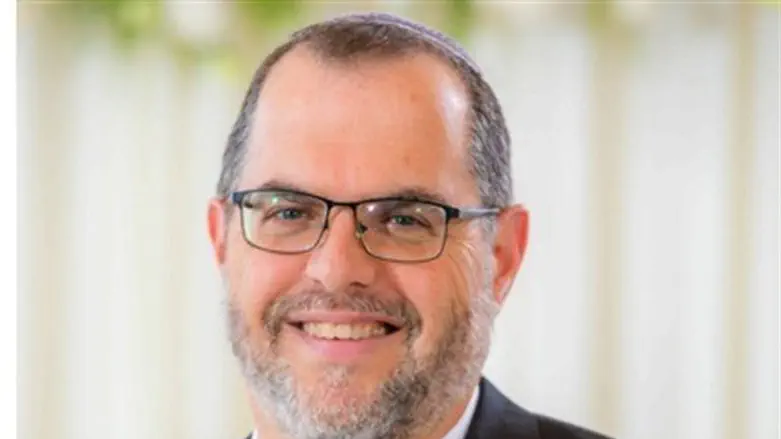
This week’s parsha, Parshat Teruma, begins the parshiyot of the commandment and the making of the Mishkan. 450 psukim, spanning 4 parshiyot, are devoted to the complex details of the Mishkan. Although the vessels made to be used in the Mishkan were also used in the Beit HaMikdash, the Mishkan structure itself was only used in the desert and when the Jews first entered the land of Israel.
When the Mishkan stood in Shiloh it was already comprised of a stone structure but without a ceiling and the coverings of the Mishkan were still used as the roof.
If so, we may ask, why did the Torah expound so much on the description of the Mishkan when it is ostensibly only a temporary structure?
The answer is that the Mishkan was the root of the two Temples which followed it, as well as the third Temple - may it be speedily built in our day. Therefore, when studying the Parshiyot which discuss the Mishkan, one should study them with the understanding that the very temporary Mishkan preserves eternal foundations within it. From this understanding we will try to learn from the Mishkan the right attitude to beauty.
Nowadays it is possible to take a virtual tour of a museum. Through computer software we can “fly” to a particular continent, country, and city and then zoom in on the building to go on a tour inside the museum.
Let's try to join a similar journey to the Mishkan. We reach the Sinai desert and between the sands we see a tent camp. In the center of the camp there is one tent with a cloth covering which, while beautiful and special, is still a tent. We enter the tent and see acacia trees which are supporting the covering. The acacia trees are planted in silver planters. In the courtyard of the tent there is a copper altar, a Mizbeach. When we enter further we can see the Shulchan (table), the Menorah and a Mizbeach made of gold. And in the innermost room there is an Aron (Ark) plated with gold on the outside and inside while on top are the Kruvim (cherubs) and Ketoret.
The structure of the Mishkan is such that initially its beauty is not conspicuous, but as one enters more and more he can see its spectacular beauty. The Torah could have commanded that the outside of the Mishkan be made of gold, but intentionally it did not, to teach us that the focus should be on what’s hidden and not on what is revealed - that beauty must first and foremost be internal.
In the modern world, many times people invest time and effort in improving their external self and not their internal self. Everyone can make the calculations of how much effort they invest in their job and career, and how much effort they invest in their relationship with their children. How they dress when they go to work or to an event, and how they dress when at home with their spouse. How much time they invest in their fitness and food choices, and how much time they invest in correcting bad character traits, in prayer and in Torah study.
The Torah teaches us to change our priorities, and to understand that the essence of life is what is internal.
There is another point that is especially relevant to our generation, the generation of the redemption: what was said earlier was true of the Mishkan, but in the Beit HaMikdash not only the interior but also the exterior was beautiful and impressive. This is because the ideal that needs to be reached in the Land of Israel is that internal beauty is expressed in external beauty. During exile we are fighting for our very survival as Jews so that is not the right time to focus on the external beauty of our places of worship. When we return home to the Land of Israel and have a Beit HaMikdash, its internal beauty can be expressed externally as well.
The structure of the Mishkan teaches us that until we reach that happy time when the beauty of the interior and the exterior can unite, the internal takes precedence to the external.
May we soon merit the complete redemption in which the internal and external beauty of each and every Jew can shine forth.
Rabbi Shlomo Sobol is the head of the Barkai Rabbinical Center and the rabbi of the Shaarei Yonah Menachem community in Modi'in